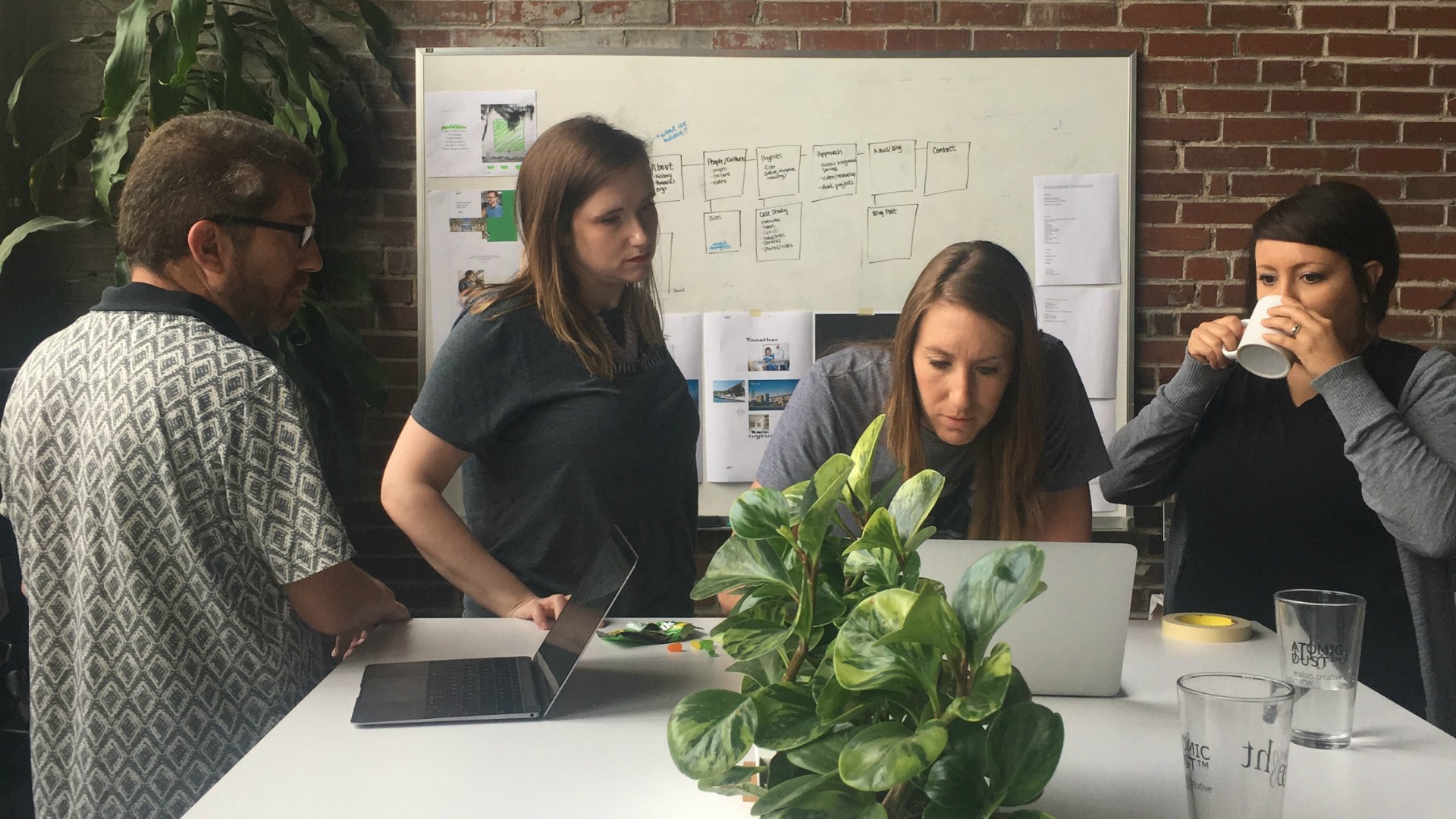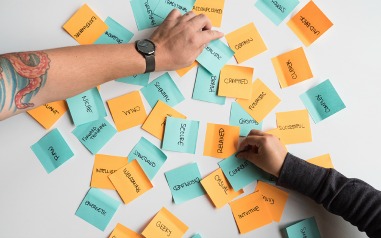Playing Nice With Others: Struggles with Creative Collaboration
I’m reading a book on structural engineering disasters. This wasn’t an intentional decision.
When I picked up To Forgive Design: Understanding Failure, I thought it would be a fun romp through the world of terrible graphic design. When I flipped to the back cover, I saw that To Forgive Design instead explores the factors behind bridge collapses, plane crashes and levee breaches. Over the course of 350 pages, author Henry Petroski explores how these accidents happen and why investigators should look beyond blueprints when searching for something to blame.
I’m oversimplifying, but across every disaster there’s a clear theme: the failure of humans to get in a room together, collaborate, communicate, and ask the right questions at critical points.
The design-build process is complex, and complexity is often the enemy of communication. Sometimes an architect makes a “minor” last-minute design change without an engineer’s input and endangers the structure’s stability. Sometimes a builder or supplier, working without the architect, chooses a material that isn’t compatible with the design.
Structural failures are a dramatic but useful example for what can happen when we assume we have all the answers, and that we don’t need to look outside of our role or our department to find them. Collaboration illuminates our blind spots and helps us recognize the impact seemingly small choices can have.
But if collaboration – particularly cross-role or cross-industry collaboration – doesn’t come naturally to us or to our company’s culture, how can we force ourselves into it? How can we overcome our own nature by creating structure and incentives to make collaboration an organic and enjoyable part of the creative process?
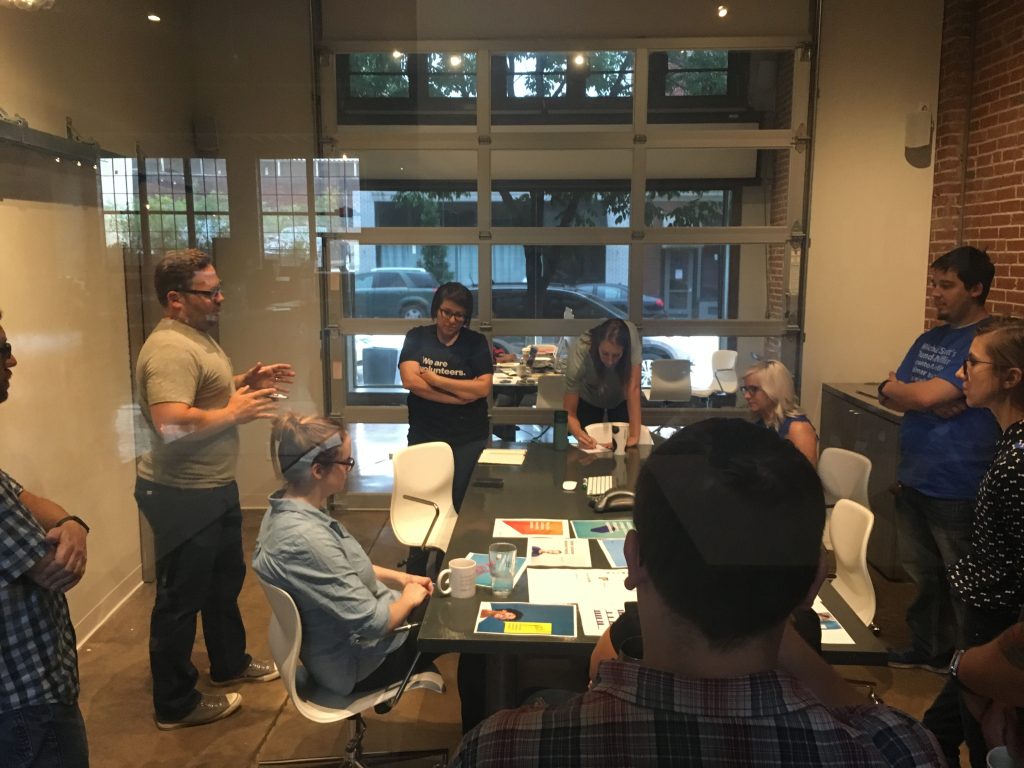
The Brand Workshop Experiment
Petroski writes about failure because he believes it’s the force that pushes progress forward. Atomicdust’s biggest creative breakthrough of 2016 wasn’t driven by failure, but it was spurred by some curiosity about new ways to collaborate.
We’ve always been proud of the outcomes of our Branding Program – powerful brand stories, beautiful visual identities, aligned internal cultures and more – but last year we became interested in exploring new ways to boost creative momentum. How could we get to solutions faster? Could we remove distractions entirely? Could we spend more time making things with each other, using rapid trial-and-error as a method for creative exploration?
What would happen if we threw everyone into the same room and compressed weeks of thinking, debate, writing and design into 16 hours?
This isn’t a new idea – brand and design “sprints” have been around for years – but we designed our own based on the steps of Atomicdust’s Branding Program. During a two-day workshop, we would review and summarize our research and audits, develop a comprehensive brand strategy, write a full set of positioning language, and begin thinking broadly about visual creative direction.
The workshop would include a facilitator, the core project team, plus two “outsiders” who hadn’t had previous exposure to the brand or the project. Harvard Business Review has noted that teams solve problems faster and more creatively the more cognitively diverse they are. We wanted to test out the theory by ensuring team members could come from any role, including account management, web development or online marketing management.
It would all take place off-site to avoid the distractions of the office. To create total focus, we added some rules: No multitasking. No phones. And no emails, except during scheduled breaks.
Because we’re a team that works best when there’s a sense of urgency, we agreed to enter each workshop with a specific mindset: “Think and write as if the client presentation was tomorrow.”
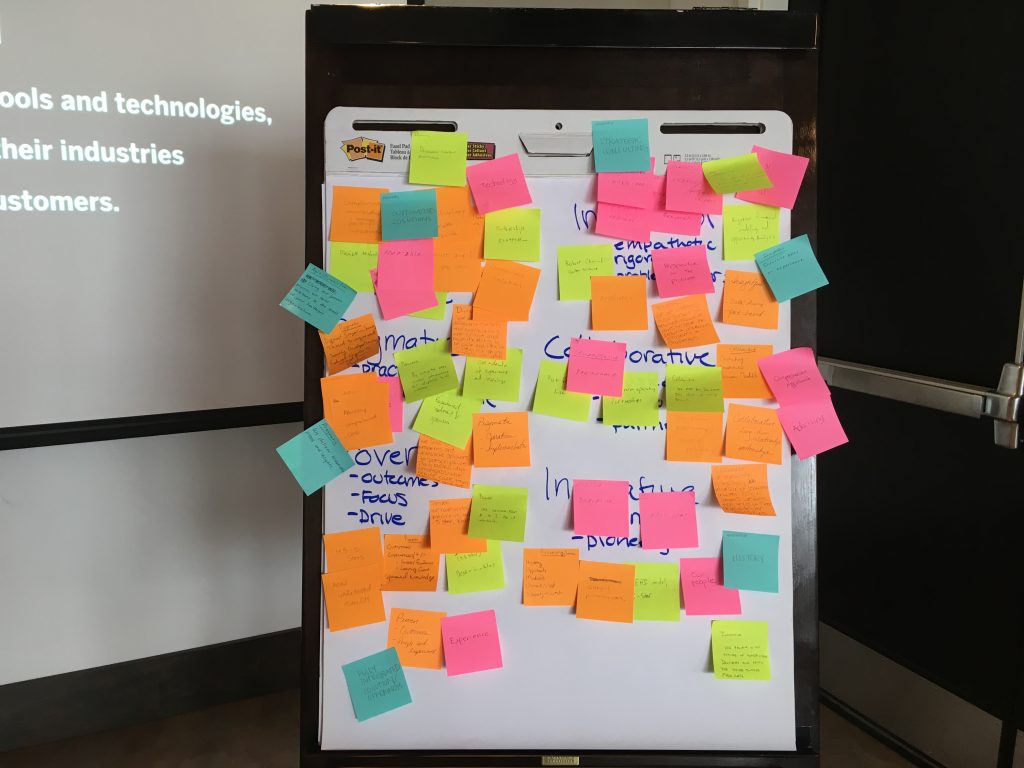
Why It Worked
Since our first workshop in June 2016 for Permobil, we’ve held a series of increasingly rewarding sessions for clients including Premium Retail Services, Cheree Berry, Barry-Wehmiller Leadership Institute and Lumeris, some of whom participated in the process. Aside from the diversity of roles among the creative team, the key to our success has been our structured, timed creative exercises. Take, for example, one of the activities we use to create brand narratives. Keep in mind that this process takes place after a thorough review of the research and a decision around the brand strategy.
- Using Post-Its, each person in the workshop takes 15 minutes to write down answers to the questions: “Why do employees at [client brand] do what they do?” and “What words come to mind when you think about the brand, its values and its voice?”
- Participants post their answers on the wall.
- Everyone engages in an open 30-minute discussion around the Post-Its and any ideas they might spark.
- For 15 minutes, everyone writes their own brand narrative based on the discussion, asking themselves what was important or resonant from their perspective.
- During a 30-minute period, everyone presents their narratives, and a group discussion ensues. Ideally, these discussions decide which ideas are worth exploring further.
- The cycle continues, alternating 15-minute writing iterations and 30-minute discussions until everyone is polishing and refining the same concept or narrative.
These shorts “bursts” of writing and focused discussion periods meant there wasn’t time to fall in love with ideas. We weren’t blinded by our personal investment in our own writing. We were willing to take tangents, write, re-write and throw things out until we found a solution that was a win for the room and for the client.
Because there were no roles in the workshop, no one could pull rank (“But I’m the writer!”). Our web developers, thrown into the workshop without previous exposure to the brand, were composing sentences that ended up in the final brand language. Their perspective and their processes were fresh.
In the end, the workshops were fast, focused, productive and energizing. But the real victory? Everyone on the team, regardless of role, walked into the final client presentation with a full understanding of the creative recommendation – and complete confidence in its strength.
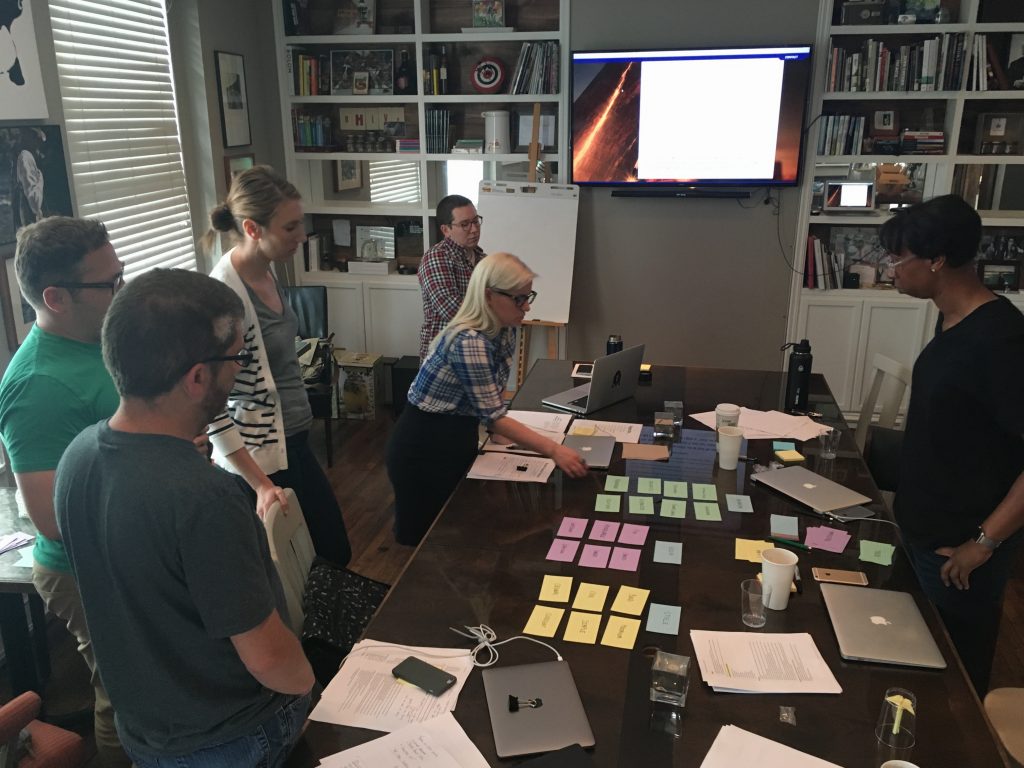
A Few Takeaways
If you or your organization struggles with creative collaboration, here are a few things we’ve learned from our workshops:
Experiment with structure. How can you “force” yourself and your team to collaborate by creating structure, whether with time, or rules? Can you make the collaborative process feel like a game?
Know what you don’t know, or surround yourself with brilliant people who can tell you.
Fall in love with your ideas slowly. And if you can’t, let people into your process as early as possible.
You must love the process of creating something amazing with your team more than you love being “right,” or being the decision maker. A “we’re all in this together” mentality isn’t just a nice-to-have. It truly improves the quality and thoughtfulness of the work.
If you’d like to learn more about our approach to collaboration, check out Jesse’s recent presentation: Collaboration Is Not a Sales Pitch. In the video, Jesse explains how bridging silos can spark creativity, improve stakeholder adoption and produce more effective, impactful results.
Want to talk about a Brand Workshop?
Do you have a branding or marketing challenge you’d like to tackle quickly with a workshop? Drop us a line and let’s talk.
